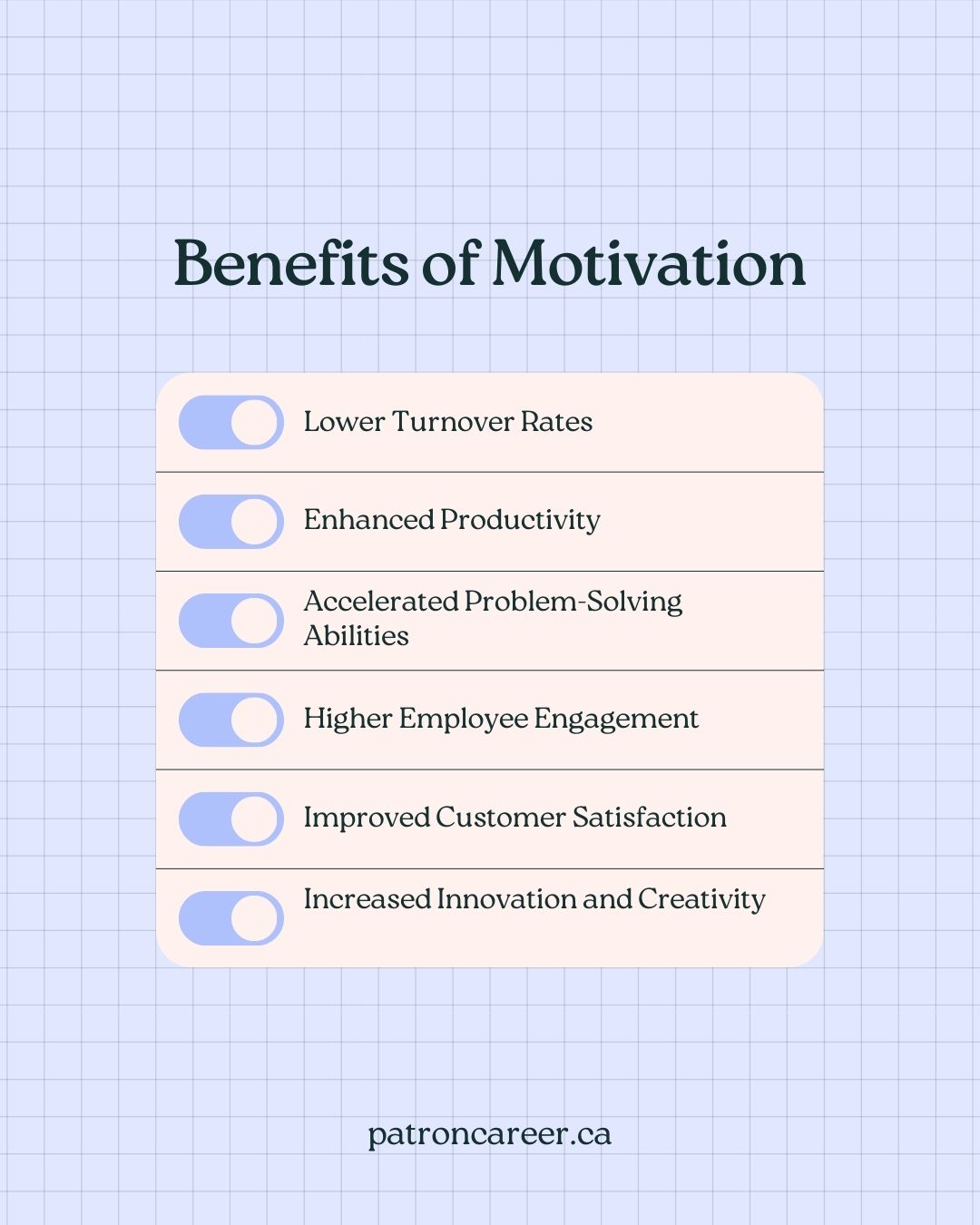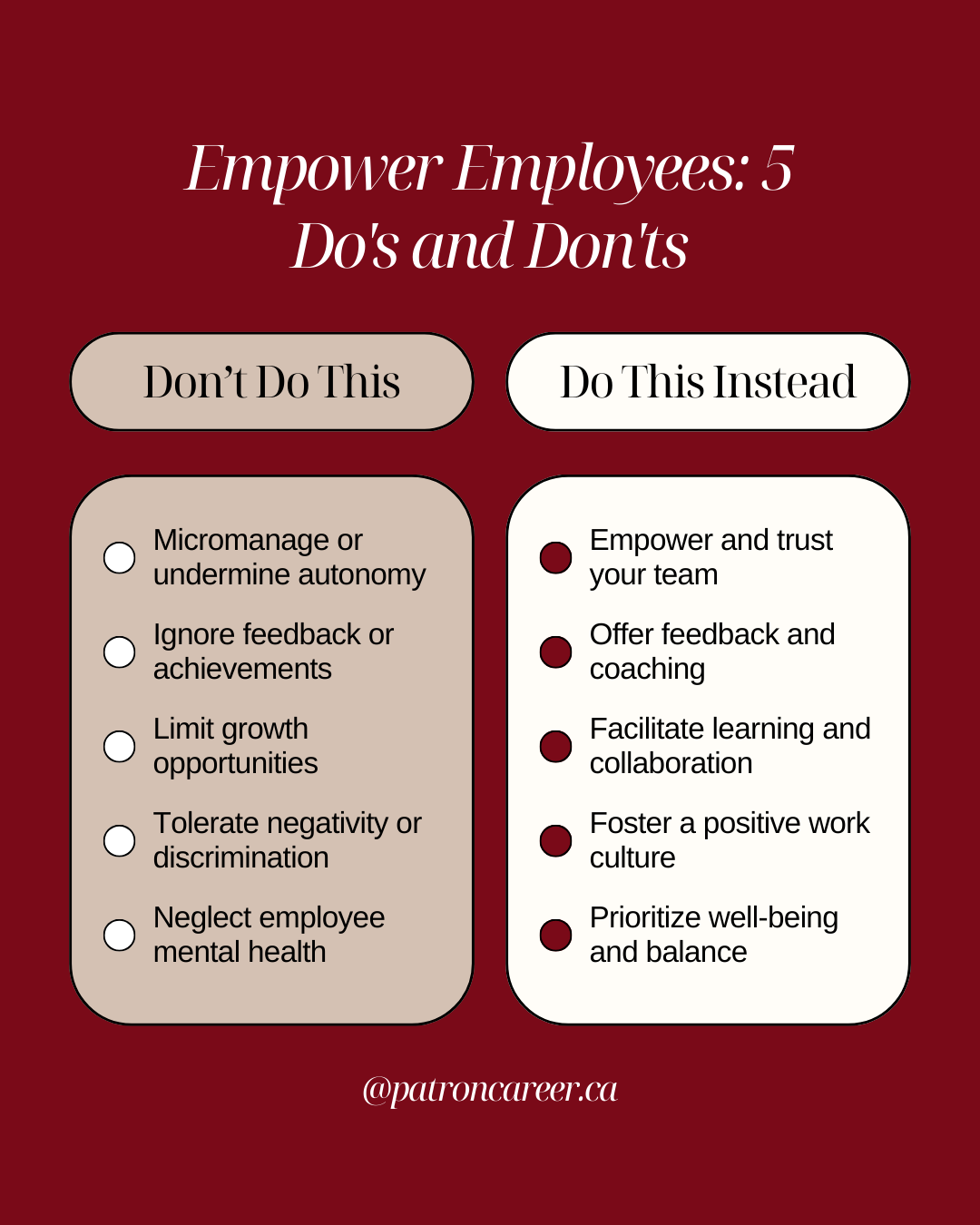
Business Analysis Skills for HR Managers
5 February, 2024
Patron Career Staffing firmly believes in adopting a tailored approach to meet temporary and permanent recruitment needs. We safeguard the interest of our clients by finding such workers who are knowledgeable and reliable.
About UsNeed help? Make a Call
32 Dundas Street East Unit A, L5A1W2

Picture this: A serene workplace bustling with energy, where employees eagerly tackle challenges and work seamlessly to achieve shared objectives. This may sound like a Shangri-La but it's indeed the reality of organizations that highly prioritize employee happiness and motivation. In the competitive reign of the business realm, a company’s success is largely dependent not only upon its product, services and managerial strategies but also on the human factors- its people. Many companies fail to comprehend that if their workforce lacks motivation, their potential may go to waste. Employees' happiness thus stands at the apex of the organization. It is a driving force that fuels a company’s profitability.
In this article, we’ll go over the importance of maintaining high workforce morale, explore different types of motivation, and delve into a plethora of suggestions and ideas to uplift your employees in the workplace.
But first things first, let's unravel the significance of employee motivation:
Why It Matters
Employers cannot control the employee’s zeal for his work but can encourage that process by instilling a positive mindset and motivation in him. High team morale is crucial for several reasons:

1. Productivity boost: when your employees are happy, their output per se increases because they feel more engaged in their work.
2. Low attrition: when the workforce is motivated, it fosters loyalty amongst them and the best talent stays, saving you on recruitment costs.
3. Creativity and innovation: when the employees are happy and motivated, they tend to brainstorm the best ideas and think outside the box.
4. Enhanced customer satisfaction: Happy employees also provide excellent customer service, leading to higher customer satisfaction levels.
What Are the Different Types of Motivation?
Intrinsic Motivation: This stems from within the individual and is driven by personal satisfaction, fulfilment, and a sense of purpose.
Extrinsic Motivation: External factors such as rewards, recognition, and promotions drive extrinsic motivation.
Social Motivation: The desire to connect with and contribute to a team or community can be a powerful motivator.
Achievement Motivation: Individuals motivated by achievement thrive on setting and reaching goals, whether personal or professional.
Effective Practices to Elevate Motivation Within the Workplace
We bring you a few suggestions and ideas that can accelerate happiness within the workplace and also uplift your organization’s business landscape. These methods should be employed to accelerate growth and development and build a positive work culture.

Encourage Autonomy and Empowerment
It's high time employers bring about decentralization within their work culture. Employees feel outright when there is a delegation of planning or basic decision- making by the top management. Companies can encourage autonomy by allowing employees at middle and lower levels to make daily decisions and undertake routine activities. It involves distributions or delegation away from upper management. Employers should trust their employees to take ownership of their work. Provide them with the autonomy to explore new ideas, experiment with different approaches, and innovate without micromanagement. Empowering employees fosters a sense of responsibility and boosts intrinsic motivation.
Related: Business Value of Employee Motivation
Implement a Personal Development Fund
Employee happiness is an intrinsic factor for running a successful business or organization. So, by allocating a budget specifically for every employee for their current or future career prospects, companies can take employee motivation to another level. With utmost good faith, the objective of the fund should focus on employee’s personal and professional development. Organizations can arrange for conferences, and learning courses or invest in relevant tools through this fund to depict their commitment to workforce growth.
Facilitate Peer-to-Peer Recognition
While decentralization is imperative in organizational functioning, employers should not undervalue the power of peer-to-peer acknowledgement. All organizations should imbibe a culture of extolment and appreciation by creating channels or platforms where employees publicly recognize each other’s accomplishments and milestones. Regular appreciation is emblematic of the fact that your company leaves no stone unturned when it comes to invigorating the employees. By publicly appreciating employees for their arduous work, employers can boost morale and productivity within the workspace.
Related: From Gratitude to Greatness: Top 8 Ways to Appreciate Your Employees
Embrace Failure as a Learning Opportunity
Edify the workforce about what lies ahead of setbacks. To foster an uplifting environment, it's crucial to view failures as a stepping stone to success rather than a mere cause of retribution or humiliation. Partake the employees in risk-taking and continual experimentation with thoughts, and ideas by valuing their failures as valuable learning experiences. Consider conducting a post-mortem meeting, wherein setbacks are discussed personally to extract the didactic lessons and identify areas of improvement.
Prioritize Mental Wellness
Time and again, the importance of investing in mental health resources is brought to light. After the detrimental effects of the pandemic, the balance between work and personal life is becoming hard to maintain. Mental health plays a crucial role in a healthy work environment. It's high time employers make provision for access to mental well-being resources like- mentoring, counselling, mindfulness activities, wellness retreats and so on. Today’s employees need to discuss their mental health challenges comfortably, openly and without any fear of stigma or judgment. That’s when they’ll know how much the company cares for them.
By implementing these people-centric approaches to imbibing motivation, you can elevate employee engagement and happiness, and inspire them to perform their best.
Empowering Employees for Success
Upliftment in the workplace is not an un-get-at-able goal. Maintaining a happy and motivated workforce isn’t just a nice to have but a strategic imperative for companies to thrive in the competitive business landscape. Remember, a motivated team is not only more productive but also happier and more fulfilled, leading to a win-win situation for both employees and employers alike.
